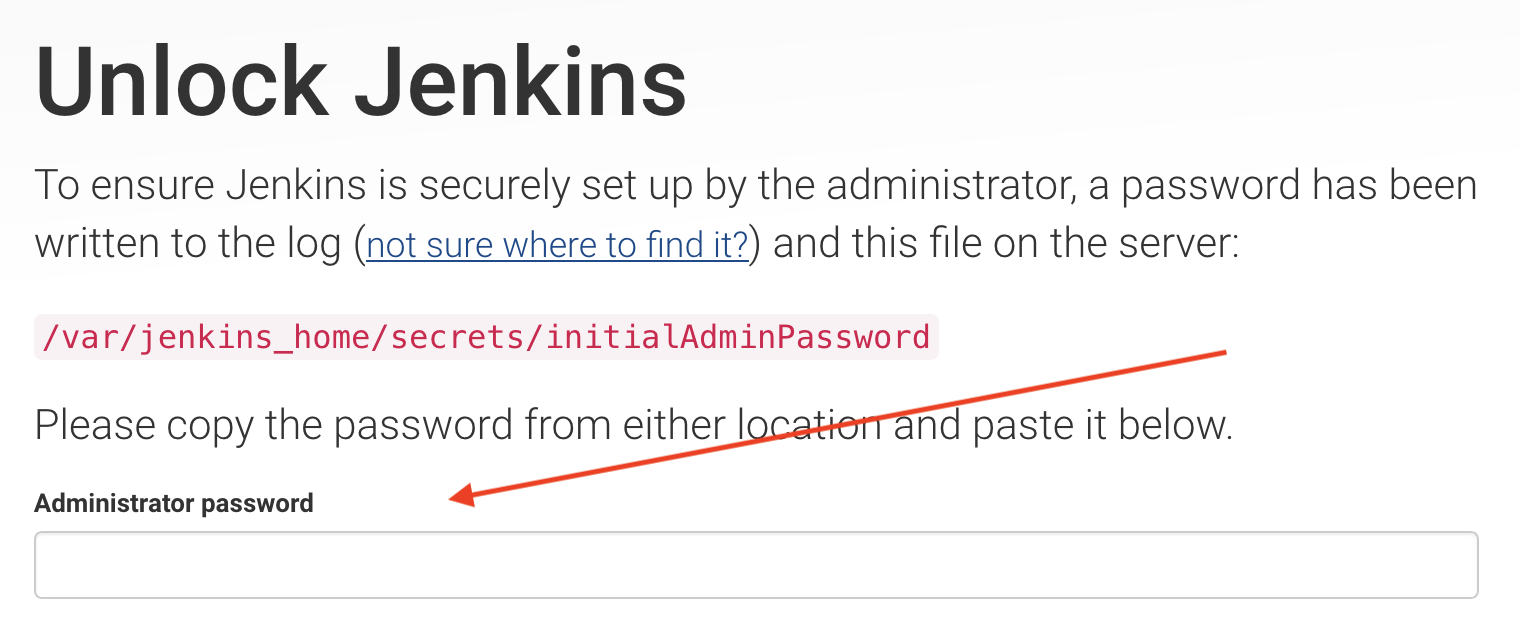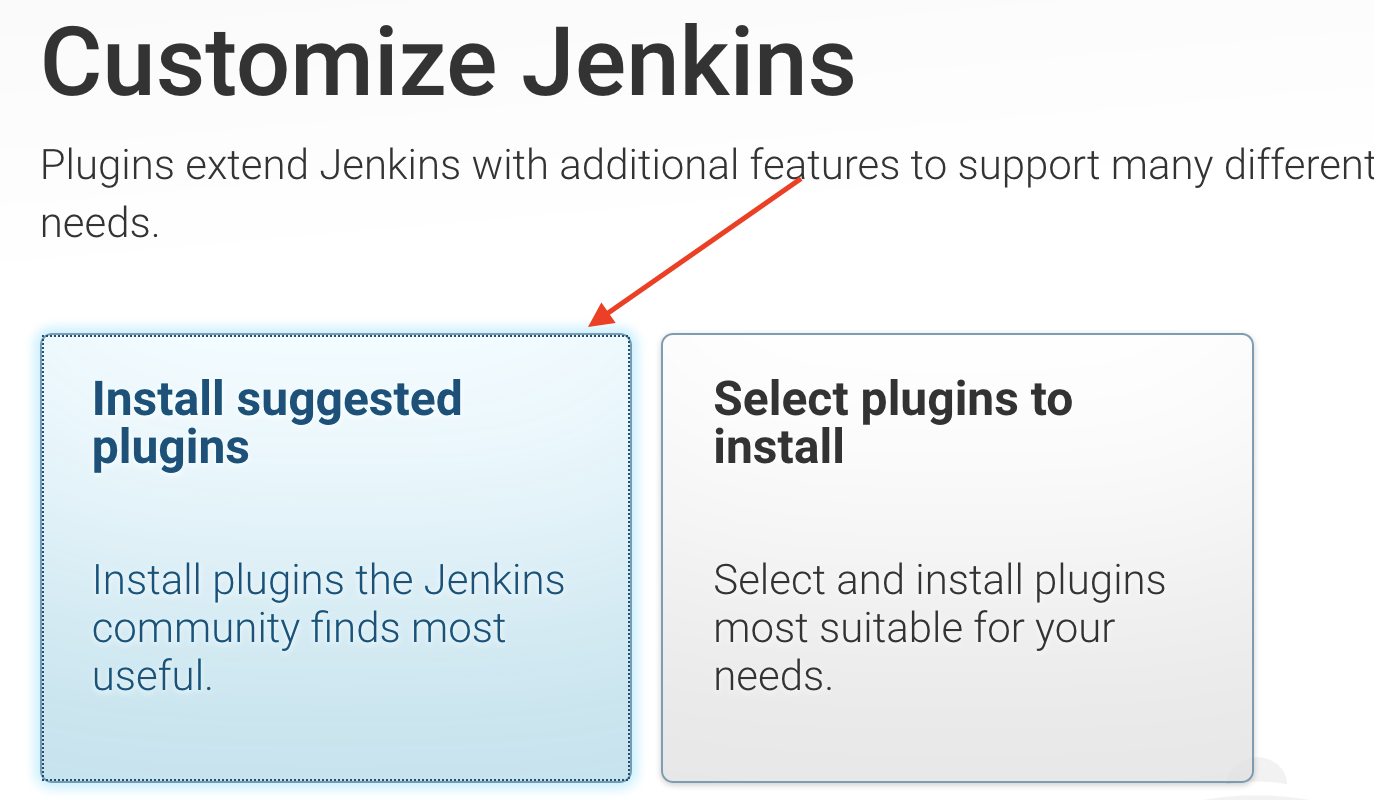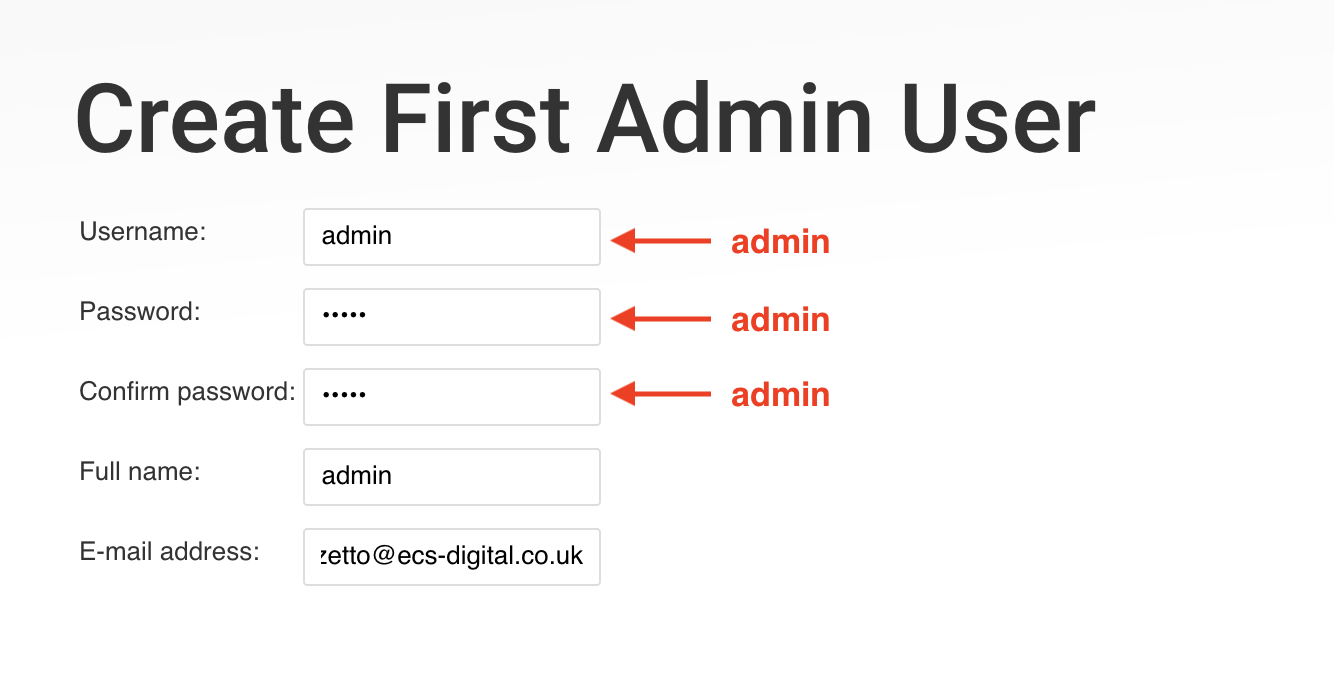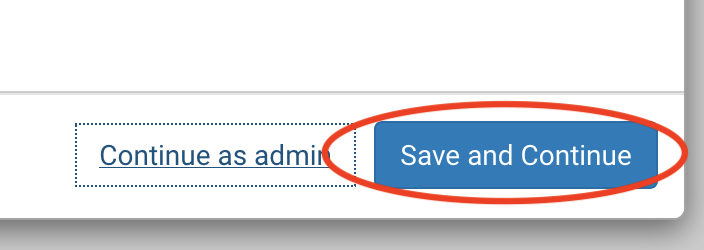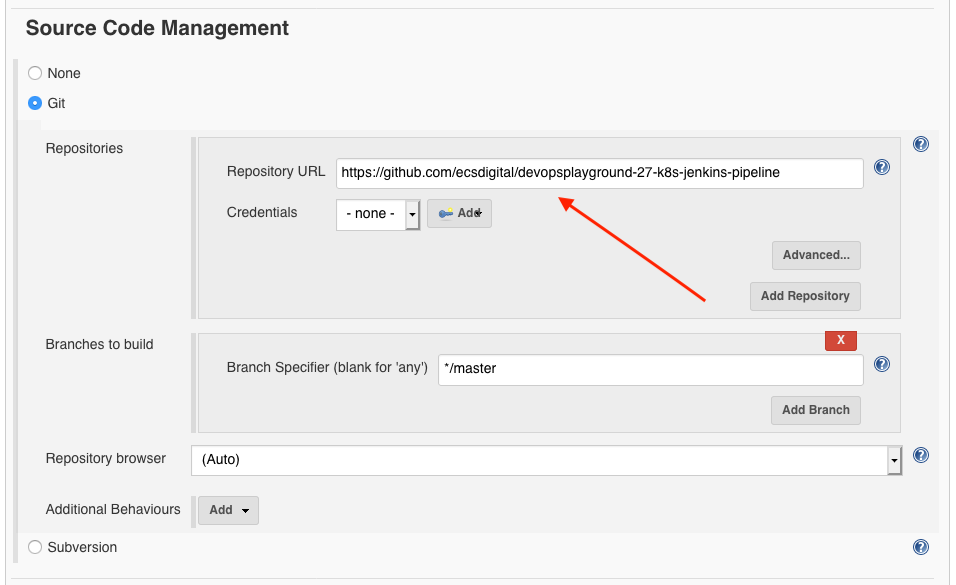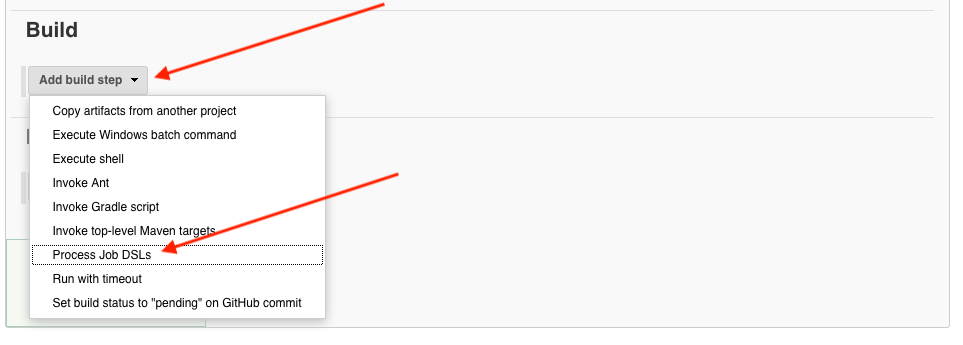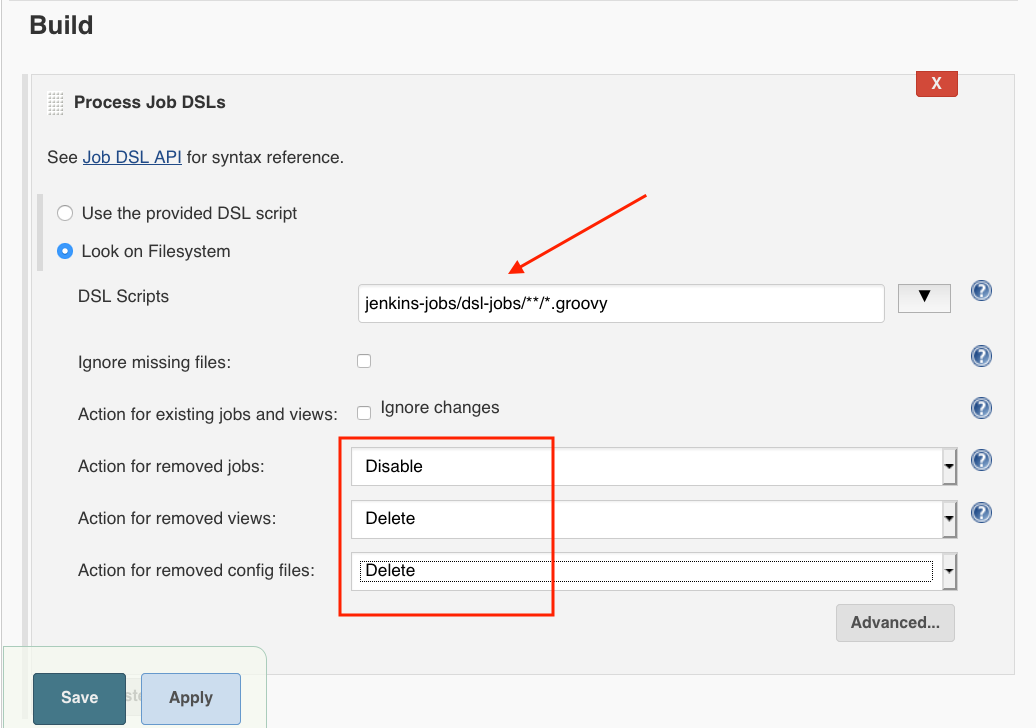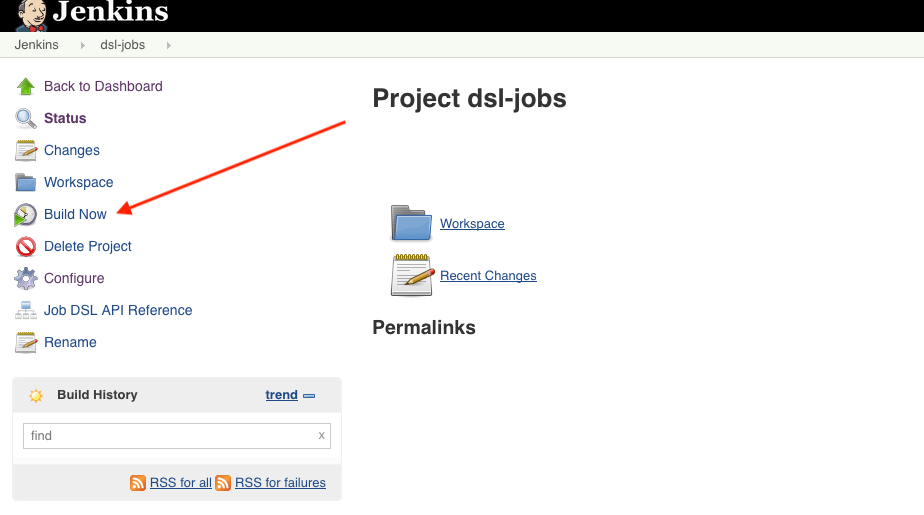Resources for Hands-on with Jenkins CI/CD Pipelines in Kubernetes
In this repository you can find all the resources required to build the components and run a simple example of CI/CD pipeline with Jenkins on Kubernetes.
It contains all the resources required to build and deploy a Jenkins stand-alone pod in Kubernetes. This custom build pre-installs a few requried tools to be used later in the pipeline, mouns the docker socket from the Kubernetes host, and uses a persisten volume to make the Jenkins configuration persistent.
Also, the rbac.yaml file is responsible to set the required permission to the Jenkins service account that'll be associated to this pod.
We'll build this container using the command:
docker build --build-arg K8S_TOKEN=xxx -t jenkins:docker .
Where K8S_TOKEN is the token of the Jenkins service account previously provisioned in Kubernetes
It contains the groovy Jenkins job definitions for all the Job used to create the CI/CD pipeline.
This jobs are either freestyle jobs and pipeline jobs. Also a piece of groovy pipeline containing the logic of the pipeline itself will be included from one of the jobs. You can read more about Jenkins DSL jobs from the plugin page.
It contains the service resources used to build the artifact to deploy. In this case it's a simple python webserver built with a dockerfile. Jenkins will build this service with the command:
docker build -t ${JOB_NAME}:${BUILD_NUMBER} .
Where JOB_NAME is automatically replaced with the name of the Jenkins job itself and BUILD_NUMBER is the current build.
This last folder contains the kubernetes configuration used to deploy the service. It can generally contains either a deployment definition, a service or a daemonset according to the kind of service we're going to deploy.
It also contains some placeholder (as SERVICE_NAME, IMAGE_VERSION) to be replaced during the pipeline execution with actual build data:
apiVersion: apps/v1
kind: Deployment
metadata:
name: SERVICE_NAME
labels:
app: SERVICE_NAME
spec:
replicas: 1
strategy:
type: RollingUpdate
selector:
matchLabels:
app: SERVICE_NAME
template:
metadata:
labels:
app: SERVICE_NAME
spec:
containers:
- name: SERVICE_NAME
image: SERVICE_NAME:IMAGE_VERSION
imagePullPolicy: IfNotPresent
ports:
- containerPort: 8080
This configuration ideally lives on its own repository and is versioned separately. For simplicity it's included with in the same repository as the other resources for the scope of this playground.
The bash script used to setup the linux server requirements.
cd devopsplayground-27-k8s-jenkins-pipeline/
sudo kubeadm init --pod-network-cidr=10.244.0.0/16
mkdir -p $HOME/.kube
sudo cp -i /etc/kubernetes/admin.conf $HOME/.kube/config
sudo chown $(id -u):$(id -g) $HOME/.kube/config
kubectl cluster-info
kubectl get pods -n kube-system
kubectl apply -f https://raw.githubusercontent.com/coreos/flannel/master/Documentation/kube-flannel.yml
export K8S_MASTER=$(kubectl get nodes -o name | cut -d/ -f2)
echo $K8S_MASTER
kubectl describe node $K8S_MASTER
kubectl taint node $K8S_MASTER node-role.kubernetes.io/master:-
kubectl create -f jenkins-build/rbac.yaml
JENKINS_TOKEN=$(kubectl get secrets $(kubectl get sa jenkins -o json|jq -r '.secrets[].name') -o json|jq -r '.data.token'|base64 -d)
echo $JENKINS_TOKEN
or use the manual commands
kubectl get secrets
kubectl describe secret <jenkins-token-xxxxxxxx>
# Build jenkins docker image
docker build --build-arg K8S_TOKEN=$JENKINS_TOKEN -t jenkins:docker jenkins-build/.
# Deploy Jenkins
kubectl create -f jenkins-build/deployment.yaml
# Create service
kubectl create -f jenkins-build/service.yaml
# Save Jenkins pod name in env var
export JENKINS_POD=$(kubectl get po -l name=jenkins -o name | cut -d/ -f2)
echo $JENKINS_POD
# Get the admin password from the logs
kubectl logs -f $JENKINS_POD
# Or from inside the container
kubectl exec $JENKINS_POD -- cat /var/jenkins_home/secrets/initialAdminPassword
http://<your_hostname_here>.ldn.devopsplayground.com:30001
# Get into the jenkins pod
kubectl exec -ti $JENKINS_POD -- bash
java -jar /var/jenkins_home/war/WEB-INF/jenkins-cli.jar \
-auth admin:admin \
-s http://127.0.0.1:8080/ \
install-plugin copyartifact job-dsl pipeline-utility-steps
or from the web interface: http://<your_hostname_here>:30001/pluginManager/available
sed -i 's/<useSecurity>true/<useSecurity>false/' /var/jenkins_home/config.xml
or from the web interface: http://<your_hostname_here>:30001/configureSecurity
java -jar /var/jenkins_home/war/WEB-INF/jenkins-cli.jar \
-auth admin:admin \
-s http://127.0.0.1:8080/ \
safe-restart
Repository URL: https://github.com/ecsdigital/devopsplayground-27-k8s-jenkins-pipeline.git
DSL Scripts: jenkins-jobs/dsl-jobs/**/*.groovy
# Find pods in test namespace
kubectl get pods -n test
# Curl the webserver
kubectl -n test exec simple-webserver-xxx-xxx -- curl -s http://127.0.0.1:8080
